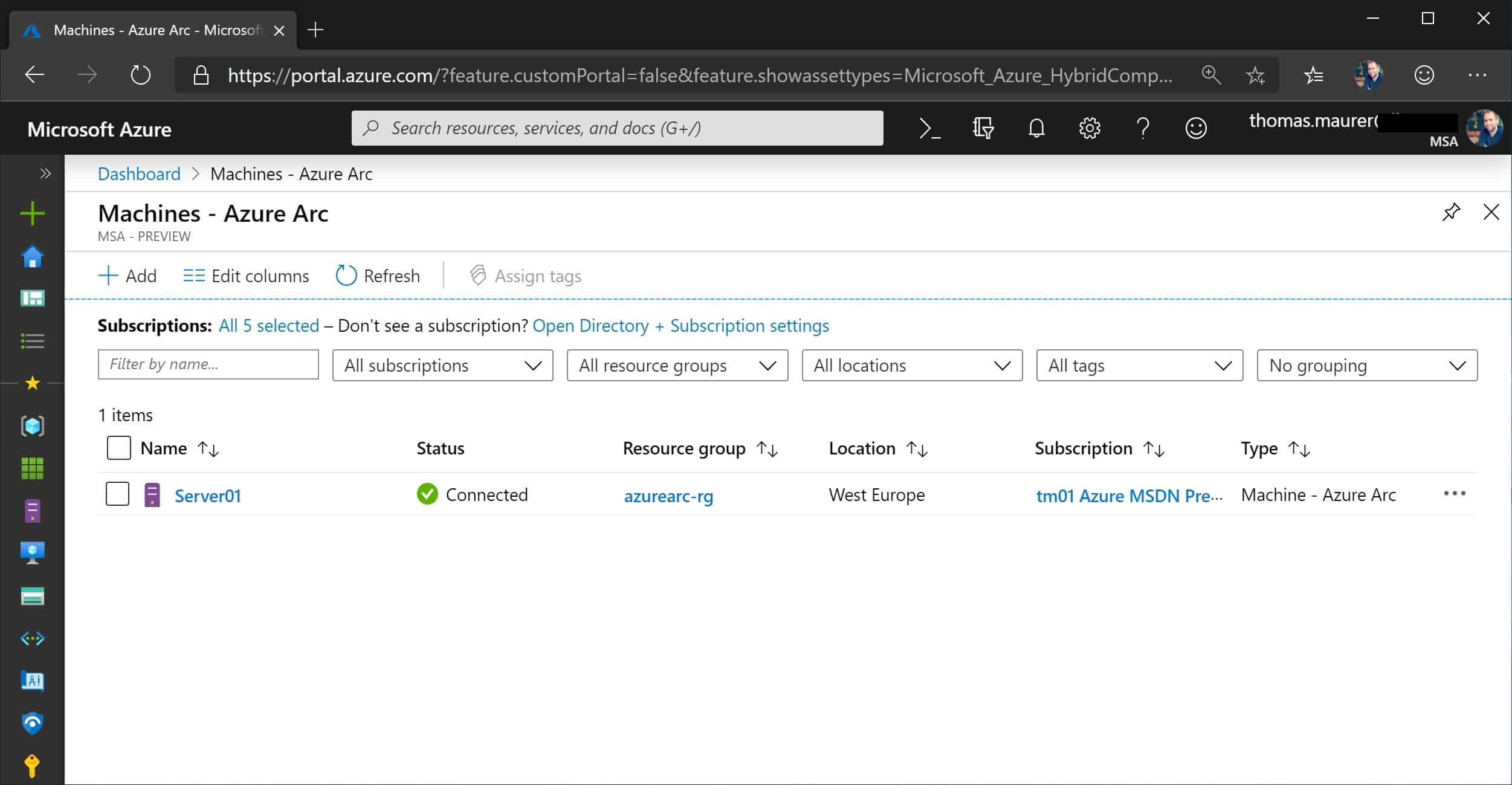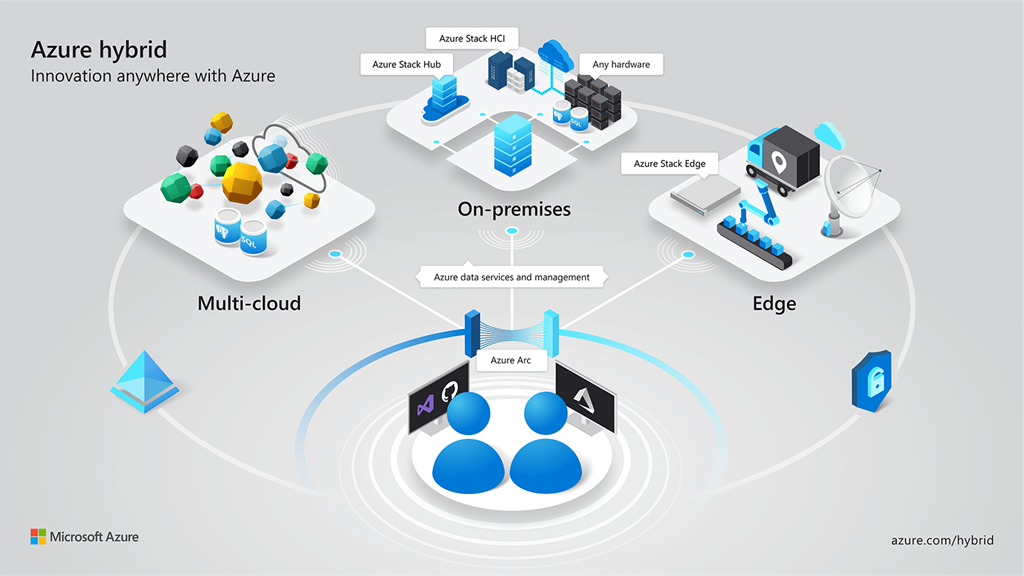
MMS • Steef-Jan Wiggers
Article originally posted on InfoQ. Visit InfoQ
During Microsoft’s premier event Ignite for IT-professional and decision-makers, the company announced several new hybrid cloud products and services. One of the most significant announcements was Azure Arc, a service in preview that allows enterprises to bring Azure services and management to any infrastructure including AWS and Google Cloud.
The Azure Hybrid portfolio currently consists of several services such as Azure Stack, Azure Update Management, and Azure File Sync. The tech giant is now expanding this portfolio with Azure Arc and as Thomas Maurer, cloud advocate at Microsoft, summarizes it in his recent blog post:
In the new world where organizations run servers, containers, and applications across multi-cloud environments, on-premises locations, and the edge, managing these hybrid resources becomes challenging. Azure Arc enables cloud-native Azure management across any infrastructure and also allows you to run Azure data services to be deployed anywhere. It includes hybrid server management, Kubernetes and Azure data services.
Or like Brendan Burns, distinguished engineer at Microsoft, states in a tweet:
Helping deliver consistent management and policy for Kubernetes, virtual machines and data services anywhere your workload takes you!
With Azure Arc, Microsoft pushes the boundaries for Azure Resource Manager (ARM) to resources outside the realm of Azure services. ARM is the layer between Azure resources and the control pane for the cloud platform – the so-called Fabric Controller. All resource provisioning operations go through this controller, including the state the resource is in, which now also applies for virtual machines (VMs) running on top of VMware vSphere, Amazon EC2, and Google Compute Engine. Moreover, users can register any VM – even ones behind a firewall or proxy, and have an agent running like the one running inside Azure VMs for communication.

Source: https://www.thomasmaurer.ch/tag/azure-arc/
Furthermore, with Arc users can:
- register and manage Kubernetes clusters like Amazon EKS, and Google Kubernetes Engine
- run managed database services such as Azure SQL Database and PostgreSQL Hyperscale in a hybrid and multi-cloud environment
- and deploy modern, cloud-native applications packaged as microservices to either VMs or Kubernetes clusters, which are a part of Azure Arc
Azure Arc is Microsoft’s response to developments in the hybrid, multi-cloud space. For instance, earlier this year Google made Anthos generally available – a service for hybrid cloud and workload management that runs on the Google Kubernetes Engine (GKE).
Both Anthos and Azure Arc are quite similar – each service takes advantage of the Kubernetes foundation to run managed data services. Furthermore, both services allow registration of external clusters and provide management through the same control plane and let customers deploy applications across multiple clusters. However, the critical difference is that with Azure Arc customers can mix and match physical servers, VMs, and Kubernetes clusters within the hybrid environment.
Lastly, Amazon, the other big cloud vendor, currently does not have a service available like Anthos or Azure Arc. Holger Mueller, principal analyst and vice president at Constellation Research Inc., told InfoQ:
CxOs want to avoid lock-in – and this is a key step ahead. It’s a Harvard case study – 1st the #3 -Google needs to open up, then #2 – Azure follows – and now all eyes on AWS.
Furthermore, Mueller added:
It’s good for enterprises as it makes workloads transportable.
With Azure Arc currently in preview, there are no costs for using the service.
